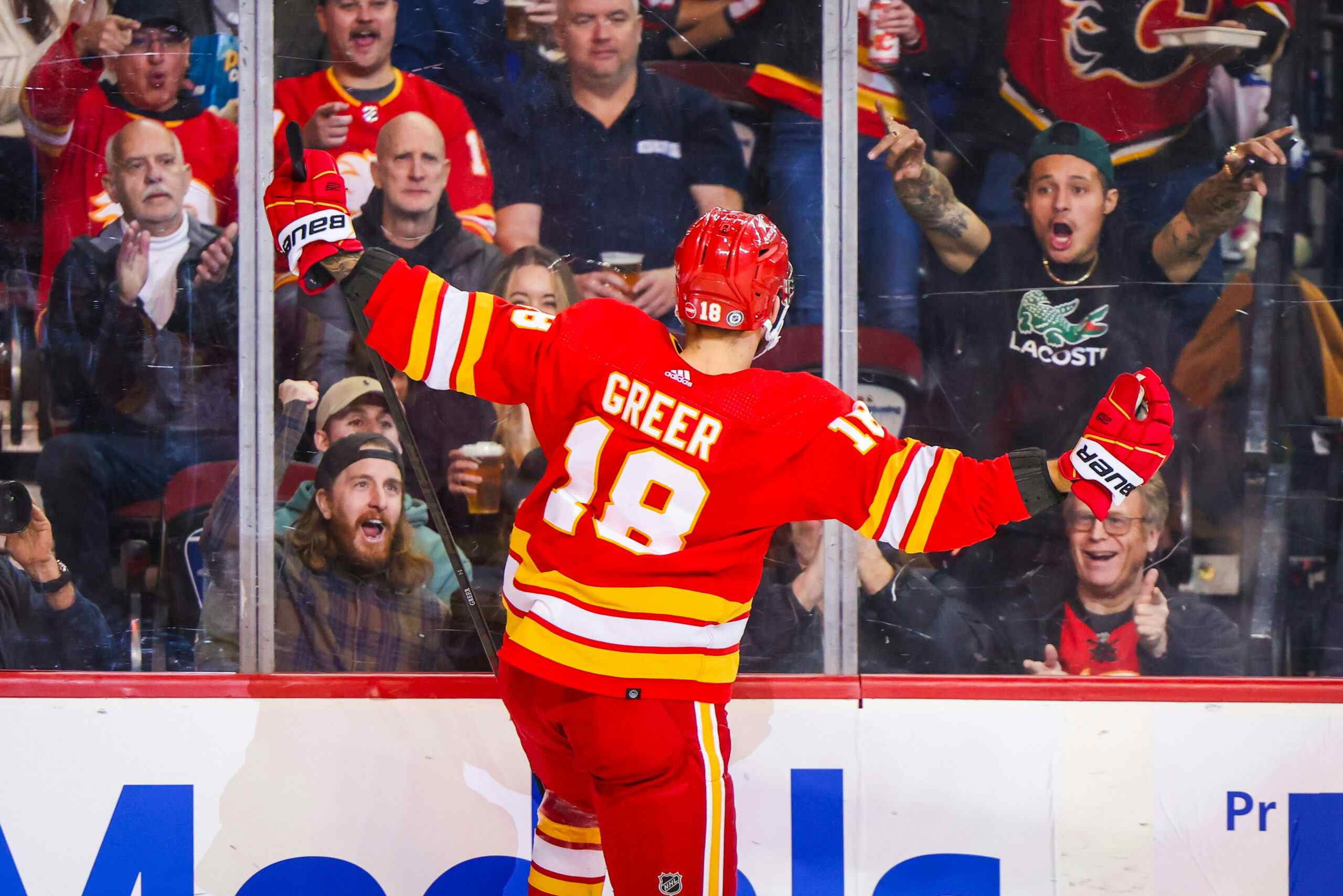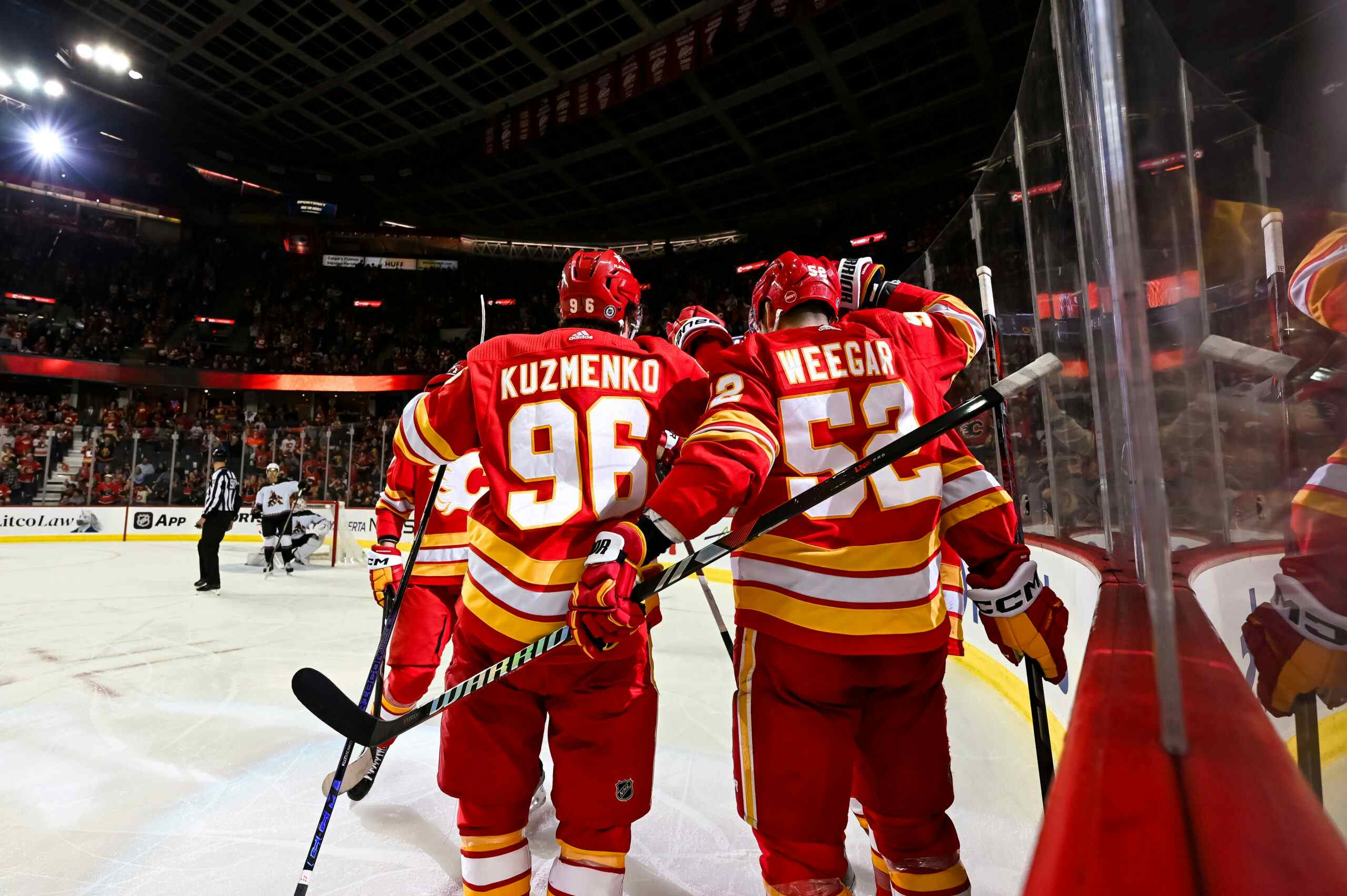A Flames Saving Grace: The Powerplay
By Byron Bader
9 years agoThe Flames currently find themselves in dire straits. While starting the season off with a bang with 17 wins in their first 26 games, they’ve now come crashing back to earth and lost eight straight. Was the hot string at the start of the season all luck? Smokes and mirrors that have all evaporated into nothing? Probably. But there is a consistent trend that has persisted for the majority of the season that might give a fan a little hope that they won’t Oilers themselves off a cliff. That being the powerplay.
Let me explain…
Special teams are generally removed from the advanced stats conversation. Possession and the like are all talked about at the 5 on 5 level and for good reason. Even strength provides the best apples to apples comparison of how teams and players perform over the same situation. However, if we assume the average team gets about 3-4 powerplays a game that means roughly 20-30% of the game is not played at evens. That’s a huge part of the game and should make up more of the conversation.
Where there has been focus on special teams is looking for under-valued players that have the ability to put their team on the powerplay much more than the penalty kill (their penalties drawn/taken differential). Dustin Brown and TJ Galiardi are good examples of this. However, this feat is also important at a team level. If a team has many of these penalty sandbaggers, they are able to tip the scale and play with an extra player much more than other teams which can make for a large and perhaps unnoticed advantage. The Flames, as it turns out, are one of the better teams at doing this.
THE NUMBERS
The below table gives an indication of their special teams prowess but to sum up Calgary has taken the fewest penalties in the league and has the 2nd highest penalties drawn/taken differential in the entire league, behind only the “Does Everything Amazing” Chicago Blackhawks. Why is this important?
Rank | Team | GP | Total PP | Total PK | Differential | PP % |
1 | Chicago | 29 | 116 | 82 | 34 | 17.2 |
2 | Calgary | 30 | 101 | 73 | 28 | 21.8 |
3 | NYI | 29 | 107 | 87 | 20 | 19.6 |
4 | Carolina | 28 | 91 | 75 | 16 | 18.7 |
5 | St. Louis | 29 | 103 | 88 | 15 | 23.3 |
6 | Nashville | 28 | 89 | 74 | 15 | 11.2 |
7 | Detroit | 29 | 114 | 105 | 9 | 21.1 |
8 | San Jose | 31 | 94 | 89 | 5 | 24.5 |
9 | Minnesota | 27 | 89 | 84 | 5 | 11.2 |
10 | Tampa Bay | 30 | 102 | 98 | 4 | 22.5 |
11 | Toronto | 28 | 103 | 100 | 3 | 20.4 |
First, to this point, Calgary has been a very good power play team (scoring on 21% of their PP chances). By taking few penalties and having a huge penalty drawn/penalty taken differential they are positioning themselves to score much more special team goals than their opposition. An extra goal here and there on the PP throughout the season will add up.
Second, Calgary is, or least was to begin the season, a horrible possession team (this has improved dramatically in the past 2 weeks or so). They were second last in CF% in the entire league at evens. Conversely, on the powerplay generally the advantaged team has the puck about 80-90% of the time. Calgary’s differential is massive, about a 40% difference between penalties drawn and taken. That’s roughly one more powerplay than their opponents every game. Being able to handle the puck 80% of the time 2 minutes or 4 minutes more than your opponents a game can be a huge boost. How much of a boost can this be?
If we look at the CF% at evens compared to CF% in all situations, the Flames jump up by 2.5% (from 44.5% to approximately 47%). That still represents a less than favorable possession number. But it is the highest difference between CF% All and CF% Evens of any team and by a lot. The next closest team (Ottawa) sees only a 1.45% boost while the average boost for all teams is essentially zero (0.02% difference) as they take enough penalties to balance it out.
Finally, we at FN (mostly Ryan) track every Flames’ game scoring chances for and against. When I was looking over the scoring chance data something stood out to me … over an entire game, the Flames often out chance their opponents or are even (+/- 2 chances) with their opponent. Additionally, as expected, the Flames often won the games that they out chanced opponents. However, if we add up only 5 on 5 scoring chances, the Flames are under water nearly every game. Their 5v5 scoring chance % (SC%) over the first 29 games sits at 47% (407F/462A), which is pretty inline with their CF% and FF% at evens. But when we include all situations, the Flames SC% shoots up to 50.7% (530F/516A), which I imagine, from a scoring chance perspective (the aggregated data doesn’t exist yet), would put them right in the middle of the pack.
What this suggests is the Flames generate a significant number of quality scoring chances on the PP. Better than other teams? I’m not sure. But when you combine this with the fact that they are very good at drawing penalties and take very few themselves this may be something that could be at least partially sustainable and help them win a few more games than the underlying numbers would suggest.
Interestingly, in the eight game losing stream, the Flames have kept up the differential. They had more PP opportunities in 5 of the 8 games while having an even number of PP opportunities in the other 2 games and only losing the penalties battle once (against Vancouver). In fact, over the entire 34 games set so far, the Flames have out drawn their opponent 19 times (56%) and have been tied on this regard numerous times as well. They rarely lose the penalty battle.
CONCLUSION
As the story goes, when the Flames out chance their opponents they outscore them. With a slightly improved possession rate at evens (as we’ve seen at times over the past seven game losing streak) and a continued dominance in generating powerplay opportunities with ample scoring chances on those powerplays it just might be enough to get them a few more wins than we’d expect and keep them in the playoff conversation.
Recent articles from Byron Bader





